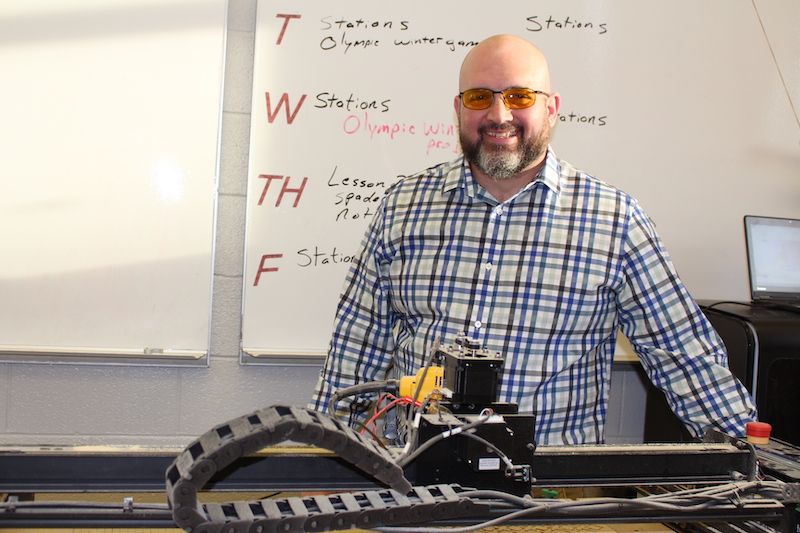Project Gameboard
In a former 20th century wood shop classroom, Steven Clark teaches 21st century design and engineering skills to two classes of middle school students in Shelby, Ohio. His goal is to introduce teens to skills they can sharpen in future vocational education classes that can translate into good paying jobs.
As the middle school STEAM teacher, Mr. Clark developed a semester-long elective course called Evolution of Gaming, which requires students to research the history of games from ancient times to current day. Afterwards, their hands-on assignment is to work with gaming software and manufacturing technology to design and produce original video games and board games to share with classmates. Through the experience, they learn each step of the manufacturing process from the design phase to final production.
“This class allows every student who might learn in a different way a chance to shine,” explains Mr. Clark, who also teaches STEAM classes at the high school. “I have very artistic students who never get to show it because they are required to write a paper or complete a mathematical problem. Here, they actually get to make a product. It’s amazing.”
Designing a Game on the Computer
Game board pieces designed and produced with a 3D printer
Mr. Clark is thankful to the Jennings Foundation for awarding him grants that have allowed him to integrate manufacturing technology into the classroom. Students use the equipment daily to create game boards and playing pieces with professional-looking results. An X-Carve router is often running in the back of the classroom carving out game boards designed on the computer. These can take anywhere from 30 minutes to three hours to complete. In addition, students learn to program a 3D printer to produce game board pieces with accuracy, precision, and dimension.
“These projects allow students to take charge of their learning; they are able to think and do for themselves; just a little bit of guidance is all they need,” Mr. Clark explains. “My ultimate goal is to create a FabLab where we can really dive into topics. These projects give students a chance to do something rather than just read about it.”




